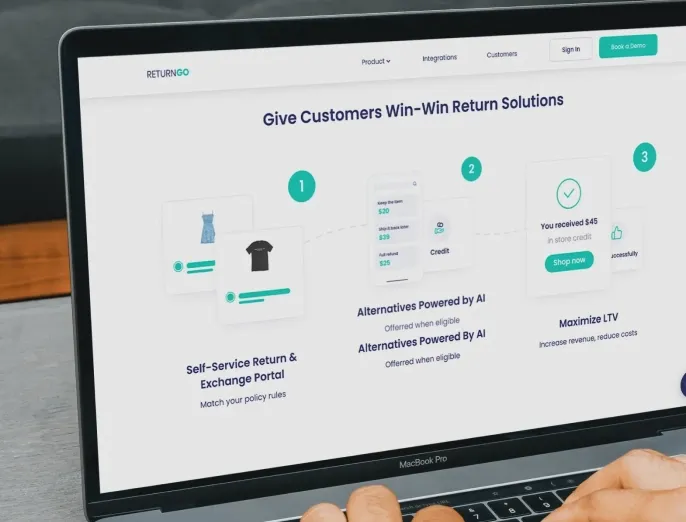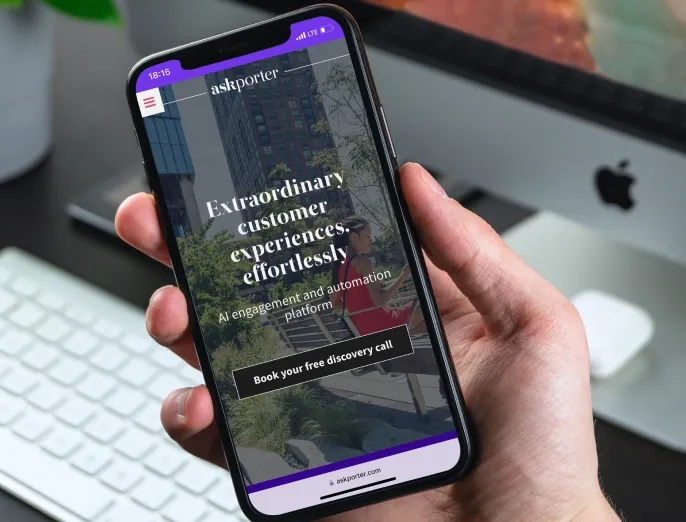
If you’re familiar with situations when you need to find something on a website but the search doesn’t provide any relevant information, you know how disappointing it can be, especially if it’s your website. The question is how to create a search experience that satisfies users with website navigation. Here, we offer an answer by exploring cutting-edge AI-powered technology that changes the way you think of site search – Vertex AI Search. What is it? And how does it work? The answers are coming.
TL;DR: Capabilities of Vertex AI Search in ecommerce
Vertex AI Search platform is designed by Google for delivering accurate search results across apps and websites. It’s based on both semantic and lexical search types to understand user intent and the context of the query.
Vertex AI Search leverages vector similarity search techniques to match data with queries. It also learns on user feedback and can be tuned for showing results that improve commerce business performance.
Some of the Vertex Search ecommerce use cases are smart site search, product recommendations, self-service customer support, and internal enterprise search.
What is Vertex AI Search?
Vertex AI Search is Google Cloud’s platform, powered by large language models, for building AI-enabled search and recommendation experiences for websites and applications. Being powered by LLM models means that Vertex understands user intent and provides instant and accurate results for the request.
Say a user is looking for “boots for mountain winter trips” in your store. Instead of showing random boots, Vertex AI Search will show warm, waterproof hiking boots, even with some pre-applied filters. On top of that, it can generate a short description right in the search results, saving the user a click.
And these are not all Vertex capabilities – more details are almost here. But first, let’s explore how search technologies have evolved and what place Vertex has taken among them.
Understanding the shift in search technologies
Three main search types are typically involved in the ecommerce industry and used in overall web development.
-
Lexical search is a keyword-based method that looks for exact keyword matches. It doesn't understand the user intent or context of the query but instead looks for the most textually relevant matches based on statistical models. Once a user enters their query, the system finds documents with matching terms and scores them based on three main algorithms – Term frequency (TF), Inverse document frequency (IDF), and BM25, which balances TF and IDF with the document length. Documents with higher scores get higher rankings, and those with the best scores are shown to the user.
-
Semantic search is a more advanced type that focuses on understanding the meaning and intent of the query using machine learning and vector embeddings. Both user queries and content (product descriptions or articles) are passed through a language model like Gemini to understand the whole idea behind the phrases. Then, the system creates a kind of meaning map to find the closest meanings without sticking to exact textual matches.
-
Hybrid search combines different search methods, typically lexical and semantic approaches, into a unified ranking and retrieval system. It uses techniques like Reciprocal Rank Fusion (RRF) to merge and re-rank the results, giving more weight to items highly ranked in both individual result sets.
Vertex AI search is Google’s hybrid search solution that uses advanced NLP models to generate semantic embeddings of documents and queries to understand intent and context. At the same time, it leverages traditional keyword-based retrieval methods to understand exact matches for the lexical part. Let’s dive deeper into how it works.
How Vertex AI Search works
Vertex AI Search workflow starts with preprocessing and indexing your data – everything you provide, like products, blog posts, and PDFs. In other words, it reads and understands your content and organizes the data for fast search by breaking it into fields (e.g., title, category), converting your data into embeddings, and creating keyword and meaning maps.
The next step is query understanding – the system takes a natural language input and transforms it into a structured query representation. Components involved are query embeddings, lexical parser, query expansion, and spell correction. As a result, the Vertex AI Search engine understands full sentences and intent, corrects typos, and converts queries into embeddings to find similarities with your data.

Then, your content and query embeddings are placed on the same meaning map. Vertex AI Search measures the distance between each component to find similarities – the closest ones are the most similar. This process is called vector similarity search.
Once Vertex AI Search finds some number of relevant results using this technique, the next question is which result should come first. That’s where ranking comes in handy. It sorts search results from most helpful to least helpful for the particular query. By default, sorting is based on relevancy, but you can finetune search for more targeted results to increase conversion.
On top of that, Vertex AI Search learns from user behavior and tailor results for each person based on their location, device, and previous searches and actions.
Learn the steps on how to implement Vertex AI Search for ecommerce. The easiest way to make Vertex AI Search work, though, is to leverage the GenAI integration services that professionals provide. Without a doubt, this will save you time and money.
Google’s Vertex AI Search features
Now, we can highlight the essential Vertex AI Search features for ecommerce businesses.
Google-quality search
Since Vertex AI is built on top of Google’s infrastructure, it leverages the power of LLM models learned from the broadest data sets ever. Plus, it utilizes the best Google search practices and is designed with deep expertise in creating an AI-powered semantic search engine.
Commerce-centric features
Vertex ensures relevant product discovery with semantic and conversational search. It also understands nuances behind customer behavior, ecommerce context, and SKUs to provide relevant product recommendations across different channels.
Optimized results
You can finetune Vertex’s ranking models to meet your specific business goals, such as better user engagement and increased conversions. The system allows you to customize recommendations and search results based on product availability, custom tags, and more.
Built-in security and compliance
Vertex leverages security protocols with strong access control to ensure full data protection. The system is also compliant with the General Data Protection Regulation (GDPR).
Fully managed
You don’t need to preprocess data, train machine learning models, or load balance to handle unpredictable traffic spikes. Vertex does it for you automatically. You also can use tools like Google Analytics 360, Tag Manager, Merchant Center, and Cloud Storage to quickly connect your data.
Out-of-the-box RAG system
Vertex AI Search also functions as a retrieval engine when you need to build RAG-powered apps. In this case, instead of building your own RAG system which could be a very complex process, you can start with Vertex AI Search capabilities, including indexing, storing, input cleaning, and a comprehensive set of APIs that comes out-of-the-box.
Use cases of Vertex AI Search for retail
Since Vertex AI works with a variety of data sources (structured and unstructured data), there are plenty of ways you can use it across different industries, from healthcare and real estate to media and finances. Ecommerce is no exception. Next, we overview some of the Vertex AI Search use cases to give you a deeper understanding of how you can apply this tool for your business.
Smart product search
Vertex AI Search allows merchants to deliver precise search results when customers look for a product using a search bar. It analyzes your product data and matches customer queries with your catalog. On top of that, Vertex improves results over time learning from customer behavior. You also can tune your search to adjust it to your business goals. For example, you can rank higher top selling products or items with higher prices, improving store conversion rate or average order value (AOV).
Personalized recommendations
Another powerful technique to boost your AOV is by implementing product recommendations powered by Vertex AI. The implementation of this tool enables you to show similar and most popular items in the product catalog or product pages based on semantic similarity to a product viewed. The same as in the previous use case, Vertex continues learning from customer actions, adjusting suggestions to user preferences.
Internal enterprise search
If your team experiences difficulties navigating across a multitude of company documents, Vertex AI Search is an option to fix this issue. To feel the situation, imagine you're in the middle of preparing a sales pitch, and you know there’s a document someone shared last month — maybe it’s in Google Drive, in an email box, or in Confluence. Vertex AI allows you to look for documents, such as PDFs and even TXT files, across multiple platforms, streamlining processes and communication inside your team.
Self-service customer support
If creating an FAQ is not sufficient for product exploration in your store, you might want to develop Vertex-powered customer support. To do this, you need to feed the system with the information you want it to process and let it communicate with your customers to deliver instant, meaningful answers to their questions, such as ‘Can I exchange my shoes if they don’t fit?’ or “Do you ship to Canada?”.
How much does Vertex AI Search cost?
Vertex AI Search pricing consists of several components. Firstly, you have to pay for search and browse queries in Google Cloud Retail Search. The pricing is $2.50 per 1000 requests. For example, if you have 10 million searches per month in total, you’re supposed to pay 10 million * $2.50/1,000 = $25,000. You can try how it works in a trial with $600 of free credits. These credits are typically sufficient to train and test a model within two weeks of A/B testing.
Training and tuning costs are charged $2.50 per node per hour. You’re also charged for prediction requests; prices start from $0.27 per 1,000 predictions for up to 20,000,000 predictions per month. On top of that, Google Cloud Observability charges for the GiB of the logs stored. The first 50 GiB of logs per month per project is free. After that, Google Cloud Observability charges $0.50 per GiB of logs.
See more details about Vertex AI Search prices here.
Who can benefit most from Google’s Vertex AI Search
Vertex AI Search best suits enterprises and rapidly growing ecommerce businesses. If you have small stores with low traffic, implementing a robust, AI-powered solution like Vertex may be overkill – and not cost-effective. These businesses might benefit more from lightweight or simpler tools until they scale. Still, if you’re looking for a search solution for your growing business, you will benefit from a pro ecommerce web development team to bring your store to the next level.
The final word
Research shows that search abandonment costs the retail industry roughly $2 trillion annually. Vertex AI Search allows companies to prevent losing money by making the search experience smooth and user-friendly with more relevant and personalized results. In addition, Vertex AI capabilities can be applied to improve upsell and cross-sell on ecommerce sites, build help centers, and streamline internal processes of enterprise businesses.
If you’re looking for specialists or plan to hire AI engineers to make the most of Vertex AI Search capabilities, don’t hesitate to contact the DigitalSuits team. We offer our expertise in AI development and provide AI integration services to connect different AI tools with ecommerce projects. Our development experience and an in-depth understanding of ecommerce needs makes us a reliable partner for companies who look to extend their store capabilities and leverage cutting-edge technologies to grow their businesses with tailored AI for ecommerce services.
Frequently asked questions
How do I access Vertex AI Search?
Go to the Google Cloud Console and find Vertex AI. Then, to start building your app, scroll down to the Agent Builder section and choose Vertex AI Search.
How to implement Vertex AI Search for ecommerce projects?
Vertex AI Search implementation process takes five main steps – data preparation, creating an app in Google Cloud, customizing the app in line with your requirements, integrating the app with your store using APIs or widgets, and further tuning and optimizing your app based on user feedback. There is a lot of technical work to do at every stage, so you would need a reliable development team to successfully accomplish such a project.
How long does it take to integrate Vertex AI Search with my website?
It can take from a few weeks to several months or more, depending on the complexity of the task, your data volume, and your level of customization. Contact us to estimate your project and start the integration process without delays.








































Was this helpful?
0
No comments yet